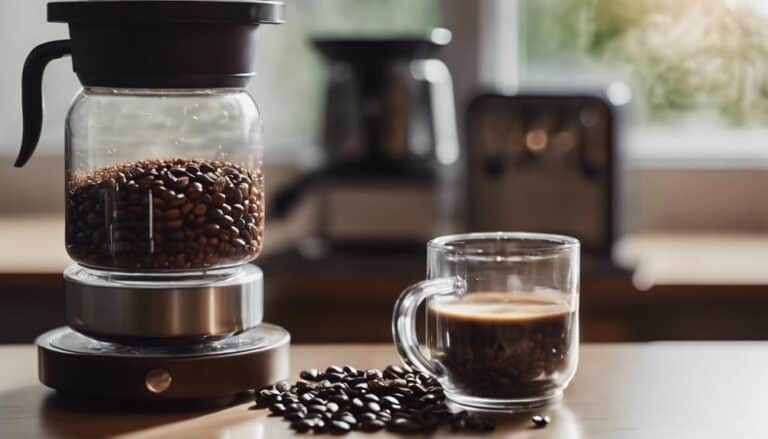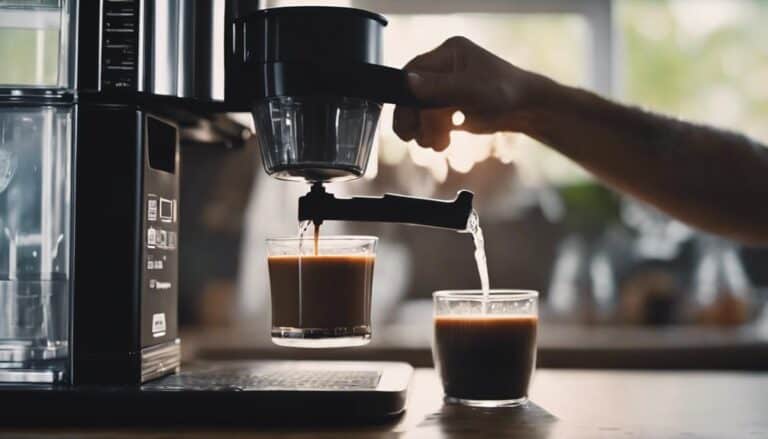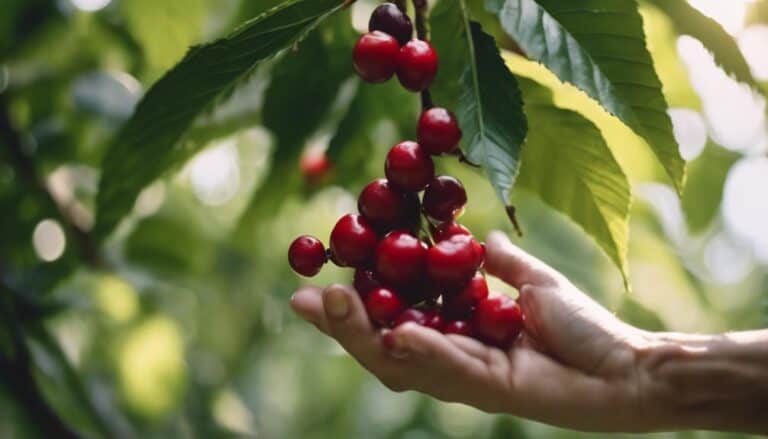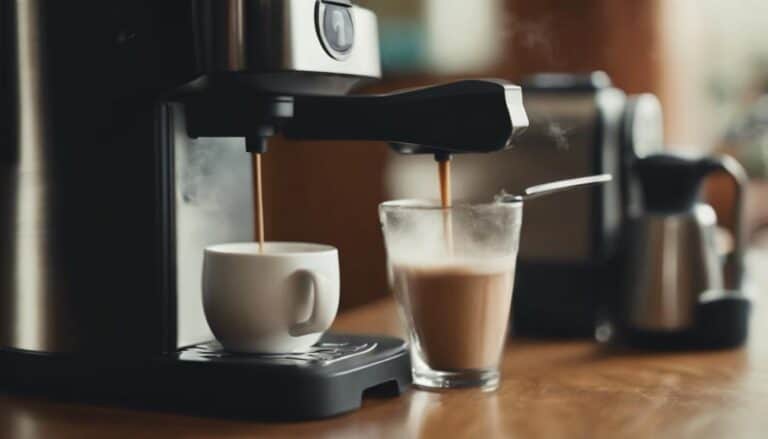Sizes of Coffee Filters: A Comprehensive Guide
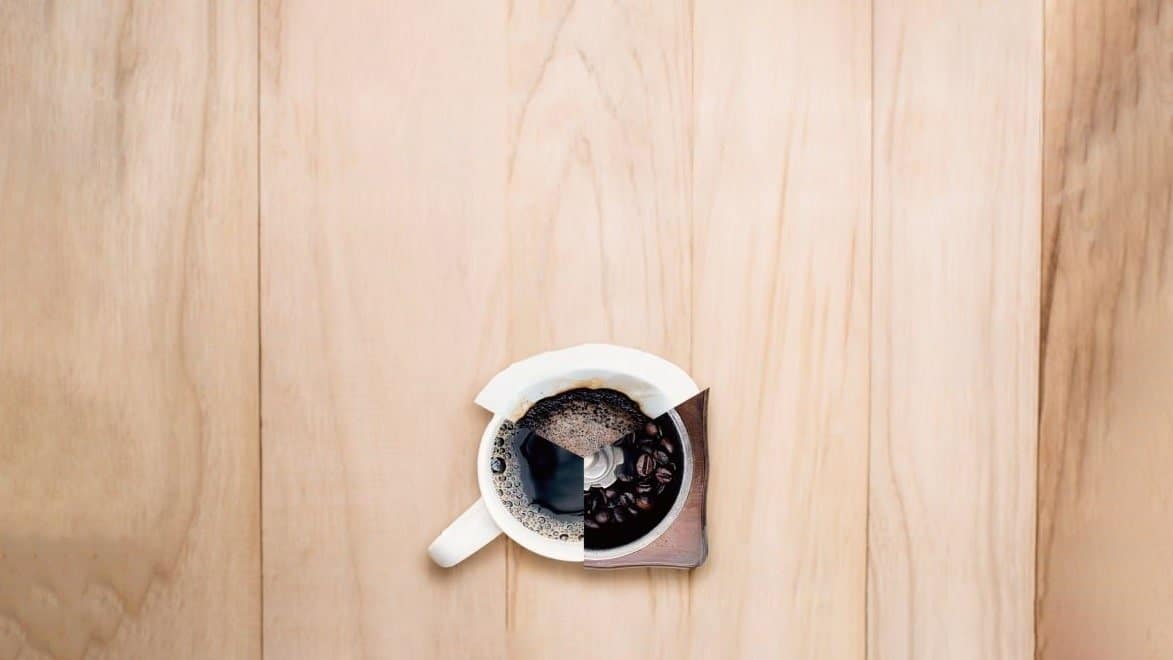
Coffee filters are an essential part of the coffee brewing process. They come in different shapes and sizes, and choosing the right one can make a big difference in the taste and quality of your coffee. In this article, we will discuss the different sizes of coffee filters and which ones are suitable for different coffee makers.

There are four standard sizes of coffee filters: #1, #2, #4, and #6. The number indicates the size of the filter and the amount of coffee it can hold. #1 filters are suitable for one-cup coffee machines, while #2 filters are designed for 2-6 cup coffee makers. #4 filters are perfect for 8-12 cup coffee machines, and #6 filters are suitable for larger coffee makers that can make more than 10 cups of coffee. Choosing the right size filter is important because using the wrong size can result in weak or bitter coffee.
When choosing a coffee filter, it is also important to consider the shape of the filter. There are two main types of coffee filters: flat-bottom and cone-shaped. Flat-bottom filters are suitable for drip coffee makers, while cone-shaped filters are used in pour-over coffee makers. Cone-shaped filters come in four standard sizes, just like flat-bottom filters. Understanding the different sizes and shapes of coffee filters can help you make the perfect cup of coffee every time.
Types of Coffee Filters
When it comes to coffee filters, there are several types to choose from. Each has its own unique advantages and disadvantages. In this section, we will discuss the most common types of coffee filters and their respective features.
Paper Filters
Paper filters are the most widely used type of coffee filter. They are disposable, easy to use, and come in a variety of sizes. There are two types of paper filters: bleached and unbleached. Bleached filters are white and have been treated with chemicals to remove any impurities. Unbleached filters are brown and have not been treated with any chemicals.
Bleached paper filters are the most common type of filter and are generally considered safe for use in coffee makers. However, some people prefer unbleached filters because they are more environmentally friendly.
Metal Filters
Metal filters are reusable and can be used for a long time. They come in different shapes and sizes and are usually made of stainless steel or gold-plated mesh. They are more expensive than paper filters but can save money in the long run.
Metal filters are great for people who want to reduce waste and are environmentally conscious. They are also great for people who want to enjoy the full flavor of their coffee, as they allow more oils and flavors to pass through the filter.
Cloth Filters
Cloth filters are reusable and can be washed and reused multiple times. They are usually made of cotton or hemp and are available in different sizes. They are more expensive than paper filters but are more environmentally friendly.
Cloth filters are great for people who want to reduce waste and are environmentally conscious. They are also great for people who want to enjoy the full flavor of their coffee, as they allow more oils and flavors to pass through the filter.
Permanent Filters
Permanent filters are reusable and can be used for a long time. They are usually made of metal or plastic and are designed to fit specific coffee makers. They are more expensive than paper filters but can save money in the long run.
Permanent filters are great for people who want to reduce waste and are environmentally conscious. They are also great for people who want to enjoy the full flavor of their coffee, as they allow more oils and flavors to pass through the filter.
Specialty Filters
Specialty filters are designed for specific types of coffee makers. For example, Aeropress filters are designed specifically for use with the Aeropress coffee maker. French press filters are designed for use with a French press coffee maker. Hario V60 filters are designed for use with a Hario V60 coffee maker. Chemex filters are designed for use with a Chemex coffee maker.
Other Filter Types
There are several other types of coffee filters, including disc filters, bucket filters, cone filters, and flat-bottom filters. Disc filters and bucket filters are usually made of metal or plastic and are designed to fit specific coffee makers. Cone filters and flat-bottom filters are usually made of paper and are available in different sizes.
Filter Shapes
Coffee filters come in different shapes, including cone-shaped filters, bucket coffee filters, and flat-bottom filters. Cone-shaped filters are the most common type in North America because they fit well with the shape of many coffee makers. Flat-bottom filters are becoming more popular because they provide an even extraction for all sizes of ground coffee.
Coffee Filter Sizes
As coffee enthusiasts, we know that choosing the right size coffee filter is essential to achieving the perfect cup of coffee. In this section, we’ll explore the different coffee filter sizes and types, so you can make an informed decision and choose the perfect filter for your brewing needs.
Cone Filter Sizes
Cone filters are the most common type of coffee filter and are used in pour-over coffee makers such as the Hario V60, Chemex, and AeroPress. These filters come in various sizes, including #1, #2, and #4.
- #1 Coffee Filters: Suitable for single pour-over systems or single-serving coffee makers.
- #2 Coffee Filters: Suitable for two-cup to six-cup coffee makers or for a double or single pour-over system.
- #4 Coffee Filters: Suitable for larger coffee makers that brew up to 12 cups of coffee.
It’s essential to choose the right size cone filter for your coffee maker to ensure that the coffee flows through the filter correctly and produces the best-tasting coffee.
Basket Filter Sizes
Basket filters are used in drip coffee makers and come in two main sizes: #8 and #4.
- #8 Basket Filters: Suitable for larger coffee makers that brew up to 12 cups of coffee.
- #4 Basket Filters: Suitable for smaller coffee makers that brew up to 4 cups of coffee.
It’s essential to choose the right size basket filter for your coffee maker to ensure that the coffee flows through the filter correctly and produces the best-tasting coffee.
In summary, choosing the right size coffee filter is crucial to achieving the perfect cup of coffee. Whether you’re using a pour-over coffee maker or a drip coffee maker, make sure to select the appropriate filter size to ensure the best-tasting coffee.
Material and Environmental Impact

When it comes to choosing coffee filters, it’s essential to consider the materials used and their environmental impact.
Material
Coffee filters can be made from different materials, including paper, metal, cloth, and plastic. Each material has its pros and cons.
Paper filters are the most common type of coffee filter. They are convenient and easy to use, but they are not environmentally friendly. Most paper filters are bleached with chlorine, which can harm the environment. If you prefer paper filters, look for unbleached options.
Metal and cloth filters are reusable and eco-friendly options. They are durable, easy to clean, and can last for years. Metal filters are usually made of stainless steel, while cloth filters are made of cotton or hemp. They produce less waste and are a great choice for those who want to reduce their environmental impact.
Plastic filters are also reusable, but they have some drawbacks. The fine plastic mesh can become clogged or damaged over time, and the material’s chemical makeup can impact the coffee’s flavor.
Environmental Impact
Choosing the right coffee filter can have a significant impact on the environment. Paper filters are not biodegradable and can take years to decompose. They also require a lot of water and energy to produce.
Metal and cloth filters are more eco-friendly options. They produce less waste and can be used for years, reducing the need for disposable filters. However, they require more energy and water to clean.
When choosing coffee filters, consider the environmental impact of your choice. Look for filters made from sustainable materials, such as unbleached paper or cloth. Consider investing in a reusable filter, which can save you money and reduce your environmental impact over time.
Coffee Grounds and Brewing
When it comes to brewing coffee, the size of your coffee grounds is just as important as the size of your coffee filter. The wrong size can result in an under-extracted or over-extracted cup of coffee, which can be bitter or weak.
Different brewing methods require different sizes of coffee grounds. For example, French press coffee requires a coarse grind, while drip coffee makers require a medium grind. Espresso machines require a fine grind. It is important to choose the right grind size for your brewing method to ensure the best flavor.
When brewing coffee, the ratio of coffee to water is also important. We recommend using a ratio of 1:16, which means one gram of coffee for every 16 grams of water. This ratio can be adjusted to personal preference, but it is a good starting point.
Roasting also plays a role in the flavor of your coffee. Light roasts have a milder flavor with more acidity, while dark roasts have a stronger flavor with less acidity. Medium roasts are a good balance between the two.
Grinding your coffee beans just before brewing can also enhance the flavor of your coffee. This is because freshly ground coffee releases more flavor and aroma than pre-ground coffee.
In summary, the size of your coffee grounds, the brewing method, the coffee-to-water ratio, the roast, and the grinding all play a role in the flavor of your coffee. By paying attention to these factors, we can brew a delicious cup of coffee every time.
Brand, Price and Reviews

When it comes to buying coffee filters, there are a lot of options available in the market. Different brands offer different types of filters, and the prices can vary greatly. We have done extensive research and compiled a list of some of the best coffee filters based on brand, price, and reviews.
Brand
Some of the most popular coffee filter brands include Melitta, Chemex, Hario, and Filtropa. Melitta is a well-known brand that offers a wide range of filters, including cone-shaped, basket-shaped, and disc-shaped filters. Chemex filters are known for their unique square shape, which allows for a more even extraction of coffee. Hario filters are made from high-quality paper and are designed to fit Hario’s V60 dripper. Filtropa filters are made in the Netherlands and are known for their superior quality and durability.
Price
The price of coffee filters can vary depending on the brand, type, and quantity. On Amazon, you can find coffee filters ranging from as low as $5 for a pack of 100 to as high as $50 for a pack of 500. Generally, cone-shaped filters are more expensive than basket-shaped filters, and reusable filters are more expensive than disposable ones.
Reviews
When it comes to buying coffee filters, reviews can be a great way to gauge the quality and performance of a particular brand or type of filter. We have looked at hundreds of reviews on Amazon and other websites to find the most highly rated coffee filters. Some of the filters that received the highest ratings include Melitta #6 Super Premium Cone Coffee Filters, Chemex Bonded Coffee Filters, and Hario V60 Paper Coffee Filters.
In conclusion, when buying coffee filters, it’s important to consider the brand, price, and reviews. By doing your research and choosing a high-quality filter, you can ensure that you get the best possible cup of coffee every time.
Additional Uses of Coffee Filters
Coffee filters can be used for more than just brewing coffee. Here are a few additional ways to use coffee filters:
Crafting
Coffee filters can make great crafting materials. They are inexpensive, lightweight, and easy to work with. Here are a few ideas for using coffee filters in your crafting projects:
- Flower crafts: Coffee filters can be used to make beautiful paper flowers. Simply dye the filters in your desired colors, cut them into flower shapes, and layer them to create a beautiful bouquet.
- Decorative garlands: String coffee filters together to create a whimsical garland for your home. You can dye the filters in different colors to match your decor.
- Stencils: Coffee filters can be used as stencils for painting or drawing. Simply cut out your desired shape from the filter, and use it as a guide for your artwork.
Shoes
Coffee filters can also be used to help keep your shoes fresh and clean. Here’s how:
- Shoe deodorizer: Place a few coffee filters in your shoes to help absorb any odors. You can also sprinkle a little baking soda inside the filters for added odor-fighting power.
- Shoe shiner: Use a coffee filter to buff your shoes to a shine. Simply rub the filter over the surface of your shoes to remove any scuffs or marks. You can also use the filters to apply shoe polish or other shoe care products.
These are just a few examples of the many ways you can use coffee filters beyond brewing coffee. With a little creativity, coffee filters can be a versatile and useful addition to your home.
Coffee Filters in Different Settings
When it comes to coffee filters, there are different sizes and types suitable for different settings. Whether you are in the kitchen, bar, or coffee shop, you need to choose the right coffee filter that suits your needs. Here are some of the most common settings and the corresponding coffee filter sizes.
Kitchen
In the kitchen, you can use coffee filters for various purposes. If you have a drip coffee maker, you need to use a filter that fits the machine. For example, #2 coffee filters are suitable for two to six-cup coffee makers, while #4 filters are designed for eight to 12-cup electric coffee machines [1].
If you prefer pour-over coffee, you can use #1 coffee filters for single-serving coffee makers or single pour-over systems. For double or single pour-over systems, you can use #2 coffee filters [2].
Bar
In a bar setting, coffee filters are essential for making coffee cocktails. If you want to make a cold brew cocktail, you need to use a large coffee filter that can hold a lot of coffee grounds. For example, a #4 coffee filter is suitable for making large batches of cold brew coffee [3].
Coffee Shop
In a coffee shop, you need to choose the right coffee filter based on the brewing method you use. If you use a French press, you need to use a metal filter that allows more oils and sediment to pass through, resulting in a richer and fuller-bodied cup of coffee [1].
If you use a drip coffee maker, you need to choose a filter that fits the machine. For example, #2 coffee filters are suitable for two to six-cup coffee makers, while #4 filters are designed for eight to 12-cup electric coffee machines [1].
Overall, choosing the right coffee filter size and type is crucial for making a perfect cup of coffee. By understanding the different coffee filter sizes and their uses, you can select the right filter for your needs and enjoy a delicious cup of coffee every time.
[1] https://www.roastycoffee.com/coffee-filter/
[2] https://drinkstack.com/coffee/filter-sizes/
[3] https://www.roastycoffee.com/coffee-filter/
Features and Texture
When it comes to coffee filters, the features and texture can make a significant difference in the taste of your coffee. The thickness of the filter can affect the flow rate of water through the grounds, which in turn affects the extraction of flavors and aromas.
Paper filters are the most common type of filter and are available in bleached and unbleached varieties. Bleached filters are usually white and have a smoother texture, while unbleached filters have a natural brown color and a slightly coarser texture. The texture of the filter can affect how well it traps micro-grounds, which are the fine particles that can make your coffee taste bitter.
Metal filters, on the other hand, are reusable and can last for years. They are available in different mesh sizes, which can affect the texture of the coffee. A finer mesh can trap more micro-grounds, resulting in a smoother texture, while a coarser mesh can allow more micro-grounds to pass through, resulting in a bolder flavor.
Cloth filters are also available and are usually made from cotton or hemp. They are reusable and can be washed and reused multiple times. The texture of the filter can affect the flow rate of water and the extraction of flavors and aromas.
In summary, the features and texture of coffee filters can play a significant role in the taste and quality of your coffee. Choosing the right type of filter and texture can help you achieve the perfect cup of coffee.
Suitability and Flavor
When it comes to coffee filters, choosing the right size is crucial for the taste and quality of your coffee. Different coffee filter sizes are suitable for different coffee makers. For example, #1 size filters are suitable for one-cup coffee machines, while #4 size filters are designed for 8-12 cup coffee makers.
Apart from size, the type of coffee filter you use can also affect the flavor of your coffee. Paper filters are the most common and widely used type of filter, available in bleached and unbleached varieties. They are made of highly absorbent, tightly woven paper that pulls the excess oils out of the coffee beans, resulting in a smoother cup.
Metal filters, on the other hand, allow more oils to pass through, resulting in a bolder and richer flavor. They are reusable and environmentally friendly, but they require more maintenance and cleaning than paper filters.
Cloth filters are another option, offering a more eco-friendly and sustainable choice. They allow more oils to pass through than paper filters, resulting in a richer flavor. However, they require more maintenance and cleaning than paper filters, and they can retain flavors from previous brews if not cleaned properly.
When it comes to color, paper filters can be bleached or unbleached. Bleached filters are white and have been treated with chemicals to remove impurities and give them a uniform color. Unbleached filters are brown and have a more natural appearance, but they may contain more impurities and can affect the flavor of your coffee.
In conclusion, choosing the right coffee filter size and type is essential for the taste and quality of your coffee. By understanding the suitability and flavor of each type of filter, you can make an informed decision and enjoy a delicious cup of coffee every time.
